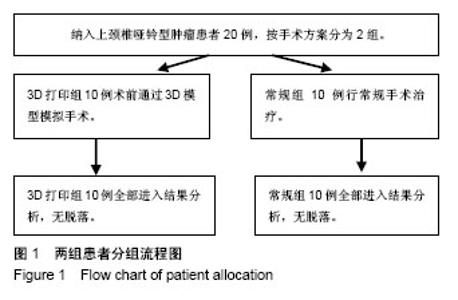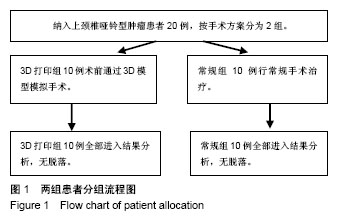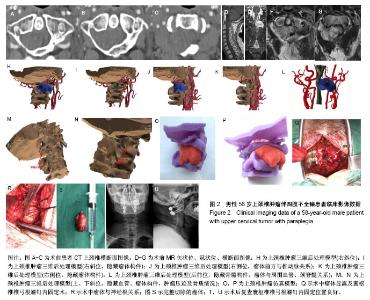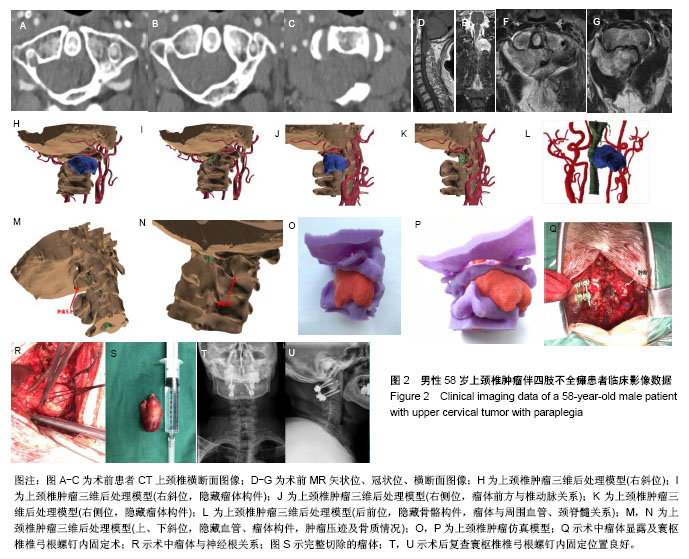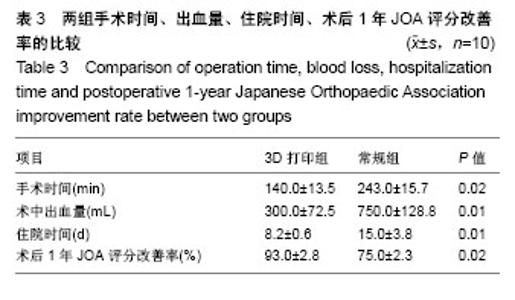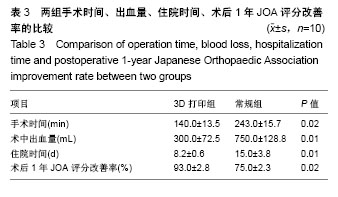| [1] El-Mahdy W, Kane PJ, Powell MP, et al. Spinal intradural tumours (Part I): Extramedullary. Br J Neurosurg. 1999; 13(6):550-557. [2] Halvorsen CM, Rønning P, Hald J, et al. The longterm outcome after resection of intraspinal nerve sheath tumors: report of 131 consecutive cases. Neurosurgery. 2015; 77(4): 585-592. [3] Yoon S, Park H, Lee KS, et al. Single-stage operation for giant schwannoma at the craniocervical junction with minimal laminectomy: a case report and literature review. Korean J Spine. 2016;13(3):173-175. [4] Xiao JR, Huang WD, Yang XH, et al. En Bloc resection of primary malignant bone tumor in the cervical spine based on 3-dimensional printing technology. Oahop Surg. 2016;8(2): 171-178. [5] Asaznma T, Toyama Y, Maruiwa H, et al. Surgical strategy for cervical dumbbell tumors based on a three-dimensional classification. Spine. 2004;29(1):E10-14. [6] Rehder R, Abd-El-Barr M, Hooten K, et al. The role of simulation in neurosurgery. Childs Nerv Syst. 2016;32(1): 43-54. [7] 武云龙,修殿辉,赵兴利,等. CTA联合容积再现在颈椎管内外哑铃型肿瘤手术中的应用[J].中华神经外科杂志, 2015,31(4): 365-367.[8] McCormick PC. Surgicat management of dumbbell tumors ofthe cervical spine. Neurosurgery. 1996;38(2):294-300. [9] Lot G, George B. Cervical neuromas with extradural components: surgical management in a series of 57 patients. Neurosurgery. 1997;41(4):813-822. [10] slin’ko EI, Al-Qashqish II. Intradural ventral and ventrolateral tumors of the spinal Cord: Surgical treatment and results. Neurosurg Focus. 2004;17(1):1-8. [11] Ying GY, Yao Y, Shen F, et al. Percutaneous endoscopic removal of cervical foraminal schwannoma via interlaminar approach: a case report. Oper Neurosurg(Hagerstown). 2018;14(1):1-5. [12] 刘通,刘辉,张建宁,等. 椎管哑铃形肿瘤的显微外科治疗[J]. 中华神经外科杂志,2016,32(6):551-555.[13] 肖建如,杨兴海,陈华江,等.颈椎管哑铃形肿瘤的外科分期及手术策略[J].中华骨科杂志,2006,26(12):798-802.[14] Lot G, George B. Cervical neuromas with extradural components: surgical management in a series of 57 patients. Neurosurgery. 1997;41(4):813-822. [15] Chowdhury FH, Haque MR, Sarker MH. High cervical spinal schwannoma; microneurosurgicat management: an experience of 15 cases. Acta Neurol Taiwan. 2013;22(2): 59-66. [16] Yu Y, Hu F, Zhang X, et al. Application of the hemisemi-laminectomy approach in the microsurgical treatment of C2 schwannomas. J Spinal Disord Tech. 2014; 27(6):E199-204. [17] Katsumi Y, Honma T, Nakamura T. Analysis of cervical instability resulting from laminectomies for removal of spinal cord tumor. Spine. 1989;14(11):1171-1176. [18] Tan MS, Wang H, Wang Y, et al. Morphometric evaluation of screw fixation in atlas via posterior arch and lateral mass. Spine. 2003;28(9):888-895. [19] 马向阳,钟世镇,刘景发,等.经后路寰椎椎弓根螺钉固定的置钉研究[J].中国修复重建外科杂志,2004,18(5):392-395.[20] 江华,肖增明,詹新立,等. 枕颈部髓外肿瘤的手术疗效分析[J]. 中华骨科杂志,2014,34(11):1119-1126.[21] 马向阳,尹庆水,吴增晖,等.寰稚椎弓根与枢椎侧块关系的解剖与临床研究[J].中华骨科杂志,2004,24(5):295-298.[22] 陈雍君,赵慧毅,谢柏臻,等.寰椎椎弓根钉内固定通道的三维CT影像学研究[J].中国骨与关节损伤杂志,2012,27(1):1-3.[23] 陈雍君,赵慧毅,段少银,等.枕寰枢复合体后方静脉结构三维CT解剖[J].中国组织工程研究及临床康复, 2011,15(52):9787-9791.[24] 李高飞,薛旭凯,江建明.外科治疗颈椎椎管内肿瘤方法及临床疗效[J].分子影像学杂志,2017,40(1):1-5.[25] 孔金海,肖辉,钟南哲,等.一期后外侧入路手术治疗III期颈椎哑铃形肿瘤的疗效[J].脊柱外科杂志,2017,15(1):24-29.[26] 菅凤增,方铁.美国神经脊柱外科高速发展带给我们的启示[J].中华神经外科疾病研究杂志,2015,14(1):1-3.[27] 王跃龙,黄思庆.不同术式切除椎管内肿瘤对脊柱稳定性的影响[J].中华神经外科杂志,2013,29(3) :313-315.[28] 郝定均,方向义,吴起宁,等.经寰椎后弓上颈椎稳定性重建的解剖学研究[J].中华骨科杂志,2011,31(4):339-342. |
